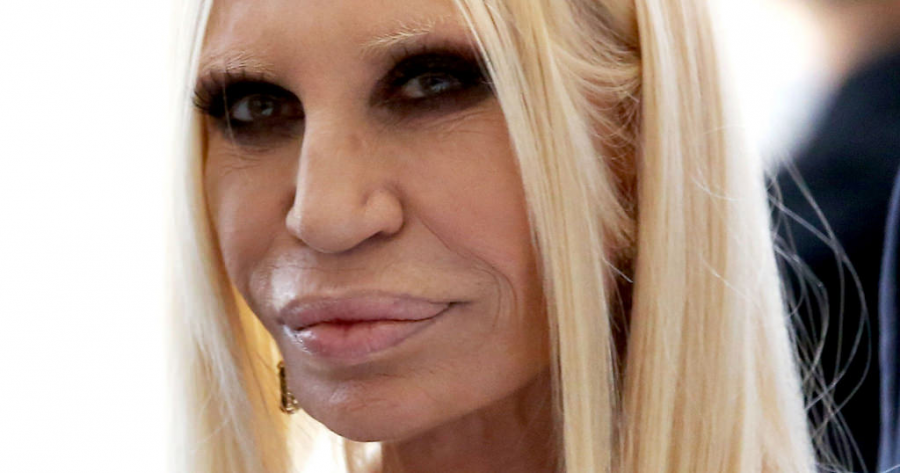Big business conglomerates degrade artistic value in the luxury retail market
Spotting a pair of Gucci sneakers in the hallways isn’t a hard thing to come by at Staples High School. Neither is spotting Louis Vuitton brown monogram purses suspended on nearly every arm along shopping district sidewalks in Westport.
These signature accessories are byproducts of conglomerates, large corporations that are run as small businesses, but made up of several different firms supplying a range of diverse goods and services, according to BusinessDictionary.com. Unfortunately, this is a problem because conglomerates capitalize off of a brand’s ability to sell, not their ability to design creatively.
When Michael Kors Holdings, an American retail conglomerate, announced the purchase of luxury Italian fashion house, Versace, in a $2.12 billion deal on Tuesday, Sept. 25, the fashion world was taken by jaw-dropping surprise.
Although Twitter was envisioning founder and late Gianni Versace practically rolling in his grave, this acquisition has me envisioning a new light being shone on the industry, one that is leans towards investment merely for the sake of financial gain.
Now that Kors and Versace operate under the same umbrella, the creative direction and artistic choices they make have to accomplish one goal: that they can be sold to a similar audience. This doesn’t mean their design aesthetic has to be the same, but stricter regulations on what is being produced will likely change the direction of Versace creative director Donatella Versace’s design choices.
Constantly tugging at one another, I have every assumption the two will not mesh well together. They tailor to different customers, they have different business intentions, and now, Michael Kors might be taking the life and energy of Gianni Versace away from his brand.
In addition to the acquisition, Michael Kors Holdings will rebrand to Capri Holdings, named after the southern Italian island. Moving forward, Capri Holdings’ subsidiaries will now include Michael Kors, shoe brand Jimmy Choo––bought in 2017 for $1.2 billion––and Versace, officially making it the first American luxury fashion conglomerate alongside the two largest, French conglomerates LVMH (Möet Hennessy Louis Vuitton) and Kering.
I was on edge about this whole situation. Twitter was obviously going insane as people were saying their goodbyes to 40 years of Gianni Versace’s ingenious vision of the luxurious and ever-sexy Italian woman. Rest assured, however––Donatella said it herself in an Instagram post that neither she nor her designs are going anywhere.
I don’t think the concept of these conglomerates is where the problem is. Their control lies in the business, not the design process. In fact, the garment a model walks down a runway is completely up to the creative director, meaning they are still able to design individually and put their brand image down any path they wish.
Despite this, the choices a designer makes is still reflective of the audience their company want to appeal to. As such, designers feel the business peering over their shoulders and urging them to tailor their products to this sort of all-purpose customer that is attracted to the design, wearability and the price tag.
Selling consumer-friendly products also hurts brands that label their garments and accessories “luxury” intentionally, meaning the quality and price is likely to decrease for mass production.
Companies like Michael Kors, Ralph Lauren and Coach also make separate outlet labels in addition to their luxury label to attract attention from wider audiences. However, an article from Business Insider stated that they all experienced decreasing earnings per share due to overselling their cheaper, outlet brands rather than promoting higher-end products. This limits their potential considerably, as consumers begin to view them as cheaper companies that don’t fit into the same category a company like Versace would fit into.
Another problem that might result from this deal is in the hands of the consumer, especially their desire towards materialistic items. Companies rely on their ability to capitalize off of seasonal trends, giving them two options when deciding on what to shift their focus: they could advertise the brand as the brand and hope shoppers’ interests are piqued, or they could bring the newest craze straight to the customer, bypassing the creative intent of a designer’s collection as a whole.
Take Louis Vuitton, as an example. The first thought that comes to mind is likely their classic brown monogram purse. The weight the bag holds in the market is likely much higher than that of Nicholas Ghesquiére’s runway designs.
Thus, the more popular the accessory gets, the more of a commercial image the brand gets and the less his creations are represented. Additionally, the classic logo appeals to customers now as an ‘accessible luxury’ rather than an ‘exclusive luxury,’ as phrased by an article from global economic news site, Quartz.
As described in an article from Vox.com, Michael Kors dresses for the woman that is fun, flirty and would spend the whole day by the beach if they could. On the other hand, Versace represents a sexy, edgy, powerful and risk-taking woman that is very clearly defined as the most luxurious and expensive shopper.
Although I’m quite frustrated, but this isn’t the end of the world. I don’t expect that Versace will die at the fault of Michael Kors or that the collections will be forgotten over some purse fad. But, if consumers still see luxury brands superficially, they begin to supplement their worth for that of fast fashion. After all, no one would want to find a tacky $100 Versace coat in a TJ Maxx department store.


















































